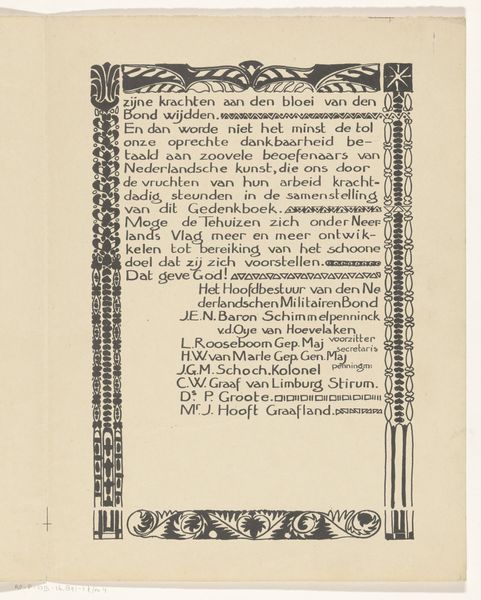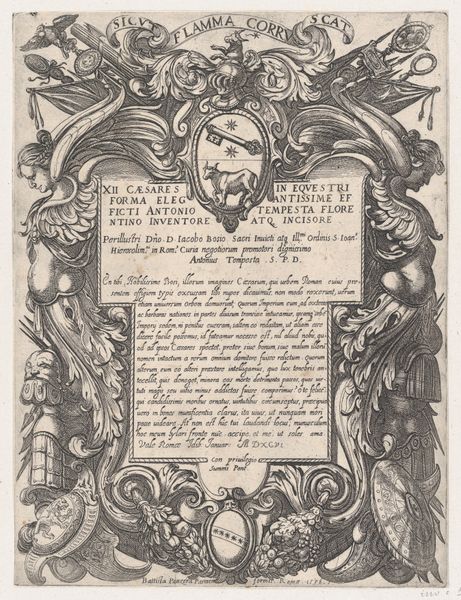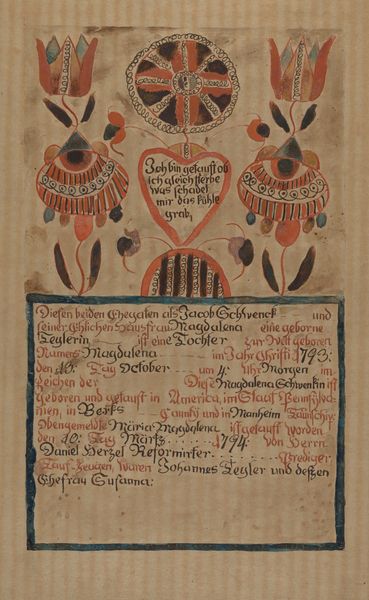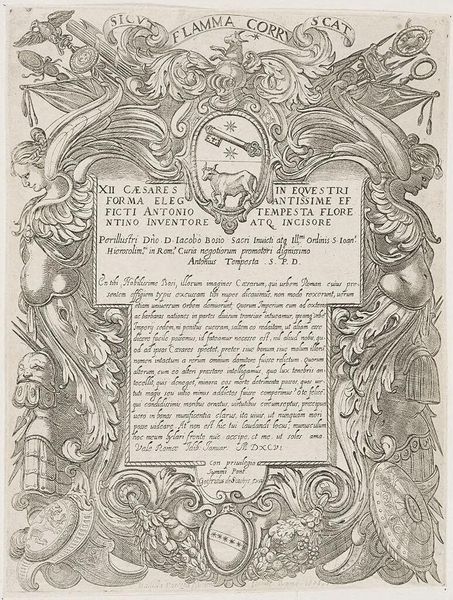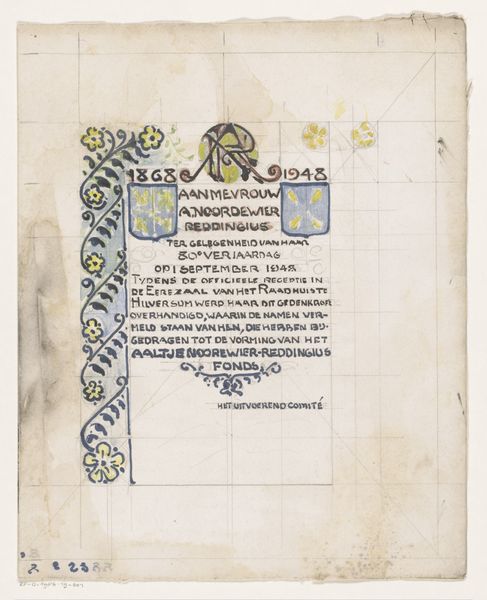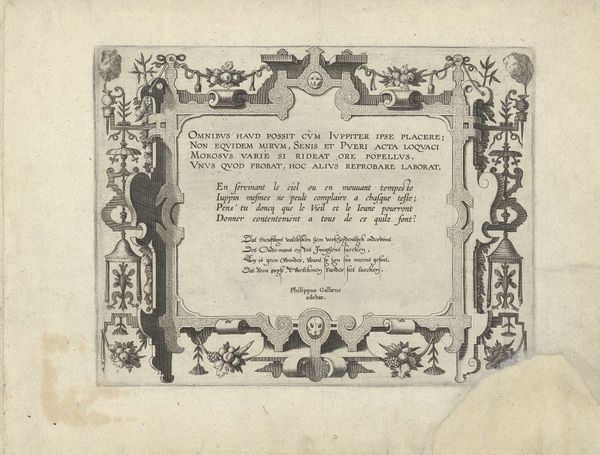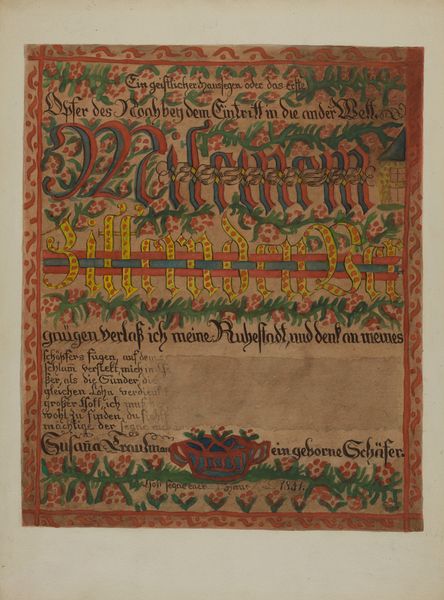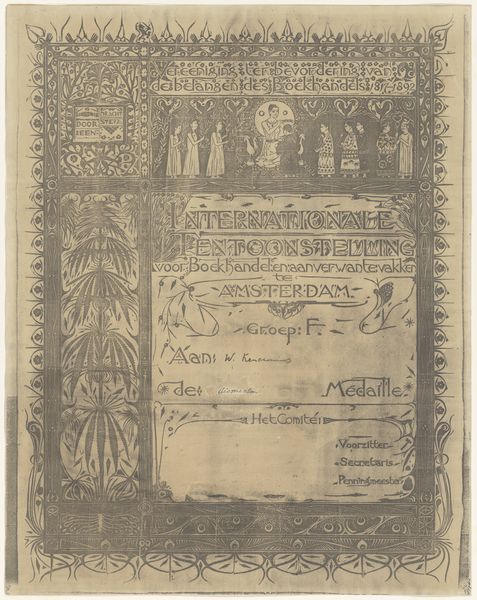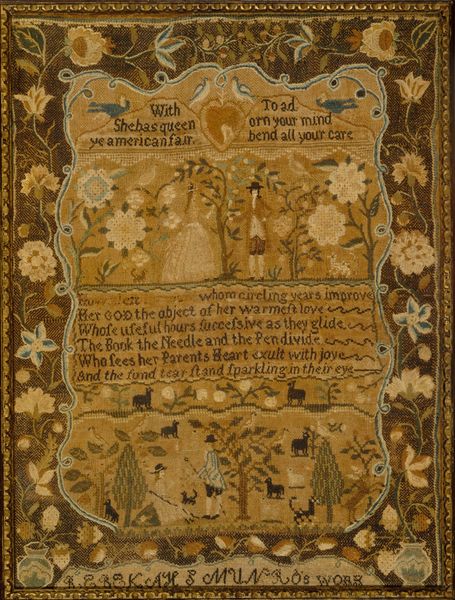
Aankondiging van een bijeenkomst ter ere van Prof. J. Förster in Maison Stroucken 1896
0:00
0:00
drawing, graphic-art, paper, watercolor, typography, ink, poster
#
portrait
#
drawing
#
graphic-art
#
art-nouveau
#
landscape
#
paper
#
watercolor
#
typography
#
ink
#
cityscape
#
poster
Dimensions: height 435 mm, width 318 mm
Copyright: Rijks Museum: Open Domain
Curator: This curious poster is "Aankondiging van een bijeenkomst ter ere van Prof. J. Föster in Maison Stroucken" created around 1896 by Carel Adolph Lion Cachet. It's a mix of watercolor, ink and typography on paper. Editor: It’s a bit…eerie, actually. The muted palette gives it a ghostly quality, even with those art nouveau decorative flourishes. And what are those strange creatures at the top? Curator: Well, let's consider the context. Posters at the turn of the century served as crucial instruments for disseminating information, particularly regarding public events and social gatherings. Here, the announcement is for a gathering honouring Professor Förster, probably a respected academic of the time. Editor: Right. So, those vaguely humanoid figures…are they celebratory figures, perhaps rendered in a somewhat avant-garde, symbolic way? They feel very stylized, and unsettling, in their symmetry. And what's that strange pink shape in the centre? Curator: Possibly, or symbolic guardians of knowledge and festivity, as the Amsterdam Art Nouveau movement Cachet worked in was influenced by Symbolist ideas. That pink… almost heart-like shape, above those figures, suggests something valued, perhaps even revered—possibly hinting at Professor Förster’s esteemed standing. Editor: Interesting, seen through the lens of the social importance attributed to academia in the 19th century, it changes the feeling a little bit, yes. But even the font feels purposeful – somewhat elegant but formal. Curator: Absolutely, Typography played a central role. The deliberate use of calligraphy not only makes the poster aesthetically pleasing but underscores the gravity and elegance of the occasion, in contrast to other printed matter in the public space. It invites engagement. Editor: I appreciate the blend of public announcement with deeply symbolic language. It speaks to how much thought went into even what we consider ephemeral material culture. It's a reminder of the rituals of honour that underpinned that era. Curator: Yes, exactly. This poster acts as a small portal to the social and intellectual life of late 19th century Amsterdam, and demonstrates the power that images had to evoke respect, anticipation, and communal identity.
Comments
No comments
Be the first to comment and join the conversation on the ultimate creative platform.
